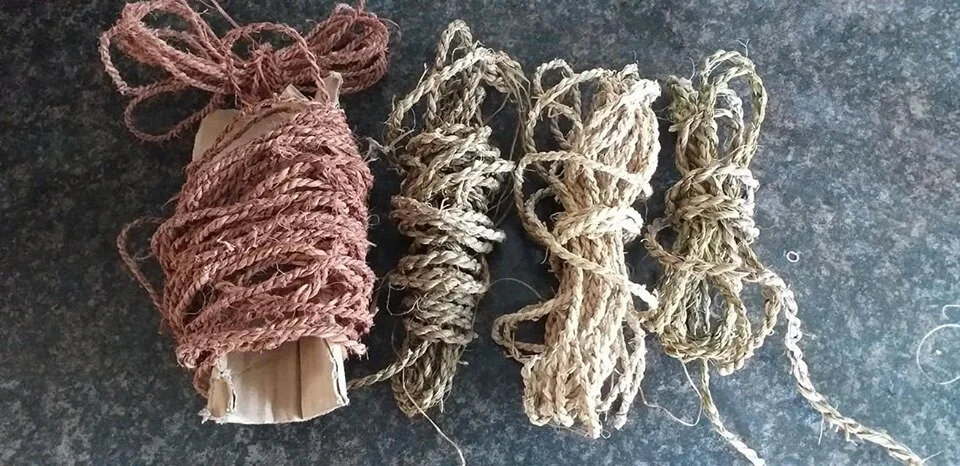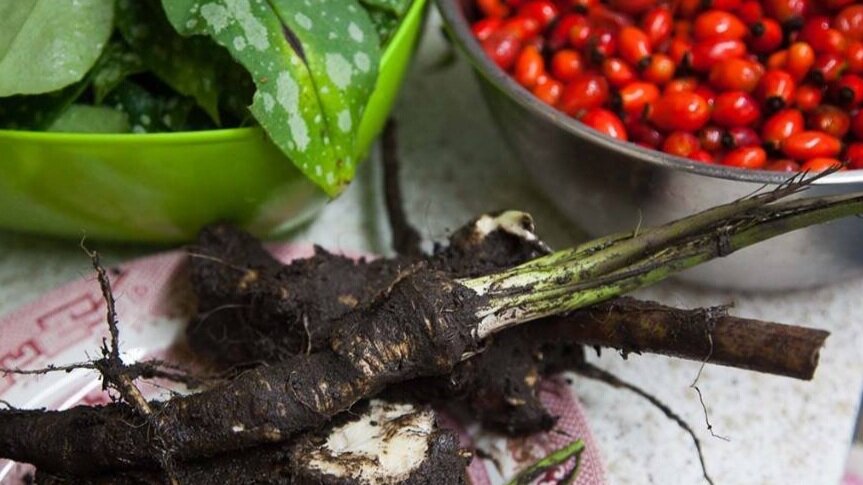Reclaiming our Native Medicines
Elecampane
Danielle and myself sat in the garden in Offshoots; Its a beautiful permaculture garden at Towneley park, Burnley, Lancashire. We’d not been here since last year and it was good to come back, to see each other and just spend time in this beautiful garden full or herbs, fruit and vegetables that we have always called the Magic Garden. We have been teaching Weeds and wild medicine here for the last five years and lockdown came just a few days before the start of this year’s course. We, as well as our students were gutted, and we had missed the Magic garden more than we thought. Sitting down drinking Valerian flower tea we discussed what we loved most about our native plants; The Weeds and Wild Medicines that love to grow so close to us, that continually fuel our passion as Herbalists and that got us as excited as six year olds at a party when we saw so many of our old plant allies growing in abundance in the garden. We giggled as we spoke their names aloud. “Wood Betony, Elecampane, Honey suckle, Valerian, Agrimony, Lungwort, Lemonbalm, Comfrey and so many more.
Harvesting berries at Towneley park
As Medical Herbalists we often dispense herbs from tinctures in brown bottles to our patients, and they heal and help people a lot. But the healing goes so much deeper when we connect to the plants, see what they look like and how they grow, where they grow and how it feels to touch them, smell their aroma and taste them in a tea made fresh straight from that plant. We sit with them and allow them to tell us about who they are, and this medicine goes much deeper than what are often just thought of as chemical constituents in a brown bottle or in tablet from a health food shop. This is the medicine of the Earth and our ancestors, and it is very powerful indeed.
The healing starts in the going out on the land, swinging a basket and leaving the modern world behind with all its troubles and challenges. Greeting the plants, connecting with them and casting our eyes over them to check identification and to see which of the plants are good to put in our medicines. Foraging can be meditative and addictive and often we enter plant time forgetting that in our liminal zone of filling a basket, we lose track of time and place, our breathing deepens and we feel our body relax. Often we taste and smell the herbs, feeling them with our fingers or digging them deep into the soil, with damp earth under finger nails and mud on our boots. We get good at seeing detail from a distance, recognising them across a field, learning the habitats of the plants; what grows where and when and in our still meditative, mindful state, the animals and birds sometimes quietly watch us. We are aware of something deeper happening to us as we connect to the land! We awaken to the bliss of reconnection with all of life and the Earth.
The joy continues back in the kitchen as we make medicines or find creative ways of storing our harvests until we need them. The medicine continues in the dispensing of them, taking them into our body or putting them on our skin and feeling how effective their healing is. This is the world of our Indigenous ancestors in these lands; People who knew the plants and lived in relationship with them; understanding their medicine and knowing that it went much deeper than what we see as chemical constituents in a bottle. To them the plants had personalities, stories and there was a certain etiquette in working with their medicine that relied on the sun, the moon, the time of day and of course utter and absolute respect. Prayers were uttered and offering made. The land was alive, the plants had spirits and everything was connected. There was no separation between physical, emotional and spiritual healing; the boundaries between medicine and magic were merged into one. We know this from the earliest plant medicines books that have been translated from Saxon times and from the folk tales told all over Europe.
The plants of course know us too, we live in relationship with them. The plants were here long before human kind and developed their medicine for their own protection and healing as well as the ecosystem around them. Humans are part of that ecosystem too, although we have long since forgotten this and fallen out of balance with nature. We are still important in the balance of life and I am reminded of this when I sometimes thin out the roots of plants that I forage, harvest them and see how the plants are more abundant in that place the next year. Often we carry seeds on our clothes or boots or replant shoots from the roots we harvest only to see a big healthy plant growing a few years later. In our modern world we forget our connection to plants and how crucial they are to the the survival and evolution of our kind. We would not be here without their ability to not only heal us, but to feed us, clothe us, provide fuel, cordage, resins, containers, utensils, tools, shelter, artistic expression in dyes, pigments and adornments.
Willow, Nettle, Rosebay Willowherb and Bramble cordage
When we’re out working with native wild medicines we are so reminded of that connection we once had and how our indigenous ancestors and the plants worked in harmony with the energy of the seasons, giving our bodies what they needed to stay health.
In the the first greening of spring, the plants that first to emerge are those that wake up our bodies from the sluggishness of winter. They provide us with deep cleansing, helping our body to shake off the last of the winter infections, ridding our intestines of parasites that have accumulated from living in close proximity to each other and our animals. They are heating too and help get the blood flowing, stimulating our liver and extremities as we wake up from our slowing down in winter. They are plants like nettles, wild garlic and the mustards, and are so deeply nutritious. It is no accident that after a winter of living off stored food, meats and sometimes enduring famine, that the newly emerging plants are the super foods of Dandelion, Nettle, Cleavers, Chickweed, Plantain, Wild Garlic that not only cleanse and heal but power pack us with their nutrition. How many people are now called to make a wild garlic pesto or nettle soup and know instinctively that it makes them feel good.
Dandelion Vinegar
late spring when the pollen is high, Mother Nature gives us the medicines we need for hayfever, rhinitis and summer sinus congestion. Elderflower, Plantain and Nettle are in abundance and and just what we need for those allergies that cause so much discomfort.
Summer is a busy time for Herbal folk with so much gathering and making to do. Sometimes the harvest time is narrow and often missed. Lime blossom is ready for only a couple of weeks in July, and so those waiting in anticipation for those calming, creamy, heady blossoms have to be every ready with baskets to harvest or wait another year. The medicines of summer are often nervines, wound healers and digestive herbs. Some of the best wound healing medicines can be found at this time to help with any injuries from work or from travel. Self heal, Yarrow, Plantain, Rosebay Willowherb, Mugwort and St Johns Wort are in abundance. Plantain grows along all the track ways and lanes and is the perfect first aid remedy for bites, stings, cuts, blisters, dirty wounds, infection and boils. In warm summer days with an increase in the risk of digestive upset due to warmer temperatures and flies. many of the plants provide medicines that are great for diarrhoea; such as Rosebay Willow herb, Plantain, Herb Robert, Agrimony and others can ease colic such as Chamomile, Lemon balm and Fennel. On long summer days reaching in to late summer and autumn, I am reminded of how ancestors would have taken advantage of the long, light days to travel long distances or do vital work in building, harvesting and processing of food. What better medicine than fresh nettle seeds to give energy to tired bodies and minds and provide vitality to those wanting to party or make love. Mugwort helps us to dream.
Autumn Harvest
Autumn sees a change in energy and although folk would be very busy with the harvests, its a time to slow down and prepare for winter survival. Elderberries, Rosehips and Blackberries are great anti-virals and many of the fungi such as Turkey tail, Hen of the woods, Chaga and Birch polypore are superb immune tonics. Fly Agaric can be a superb topical treatment for sciatica and muscular aches and pains. The barks of trees such as Wild Cherry are good for coughs and the Willow and Birch inner barks can help with damp and aching joint that we often encounter in winter.
As the land cools and we plunge into midwinter most of our medicines are now in the roots. Deep healing medicines to get us through winter; Angelica, Elecampane, Horseradish, Marshmallow and Sweet Cicerly roots to help support respiratory problems and Valerian root to calm us and take us into the deep winter relaxation of slowing our bodies down into the sleep of midwinter. Burdock, Nettle, Silver weed, and Dandelion roots can give us carbohydrates and nutrition as well as medicine.
Horseradish root, Rosehips and Lungwort
We love it that herbal medicine is a life long journey and our weeds and wild medicines are our greatest teachers. They know us, they have been with us since humanity first came to these shores and even earlier than that. They grow close to us and share their gifts just when we need them. They are free, accessible, mostly sustainable and all around us. Danielle and myself are on a lifelong mission to try and change peoples perceptions about our weeds, those amazing native medicines that were so revered by our ancestors and just keep giving to us so generously. They are the abused, the despised, the poisoned and unwanted. They are also the resillient rebels, radicals and the plant resistance squad and they will never ever leave our side or stop wanting to help us.
.







